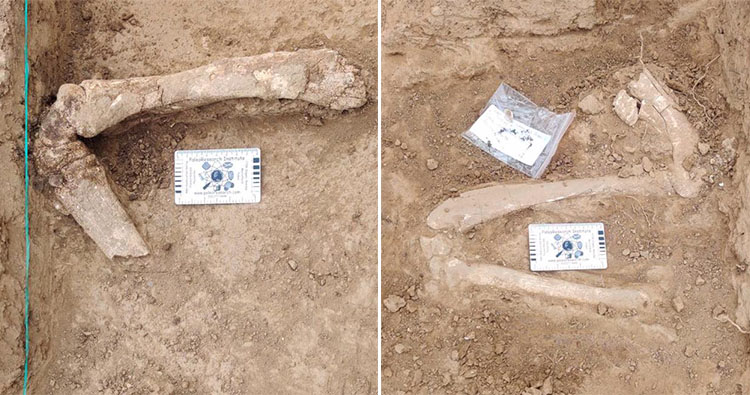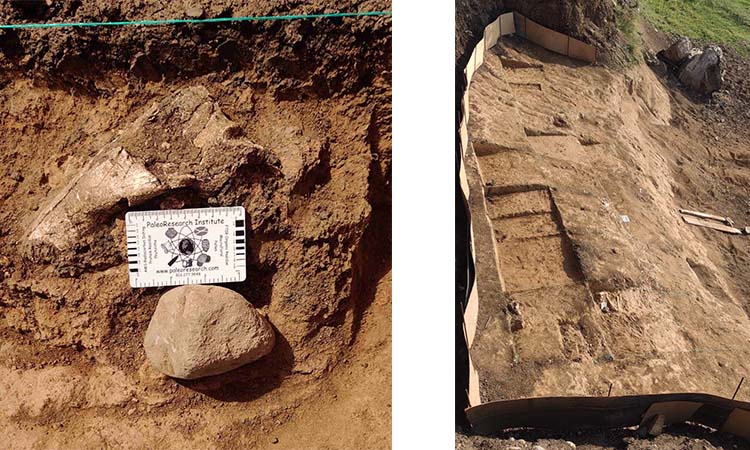Artefacts unearthed in Georgia's south point to new hominid traces out of Africa

Well-preserved animal remains and hominid artefacts have been unearthed in the site located in south of Georgia. Photos: Georgian National Museum.
Artefacts unearthed by archaeologists in Georgia's south as part of a recent international expedition have revealed a "new origin" of the ancient Homo erectus outside the African continent.
Discovered near the village of Lower Orozmani, in the Dmanisi Municipality rich with significant archaeological discoveries, stone weapons and traces of early Palaeolithic settlements appear to back hypotheses about "another prehistoric object of international significance" in the area, a Georgian National Museum release said on Thursday.
Scientists have dated the findings back 1.77-1.84 million years and credited the unearthed material with having "completely changed [the previous] understanding of the Orozmani site".

The site near Lower Orozmani village has been the subject of a number of international expeditions, most recently under a joint Georgian-American team. Photos: Georgian National Museum.
The GNM release said the discovery's significance was marked by its confirmation of the proposition of the South Caucasus, particularly the Dmanisi area, having been "settled en masse by groups of Homo erectus during their migration from Africa to Eurasia."
Beside the artefacts, the teams working at the site have been rewarded with discoveries of "well-preserved animal remains", the report also notes.
The location has been under joint exploration of Georgian and American students and scientists since last month, following an earlier work by the GNM network that unveiled artefacts confirming the site's relation to the Dmanisi area of digs that provided archaeologists with major ancient fossil findings between the 1990s and 2000s.
Even earlier works in the area included a Georgian-French study of Orozmani in 2010, with results of their work to date the site published in Quaternary Science Reviews in 2011. Original studies of Orozmani began in the 1960s.
The current GNM expedition is led by the network's scientists Giorgi Bidzinashvili.
 Tweet
Tweet  Share
Share